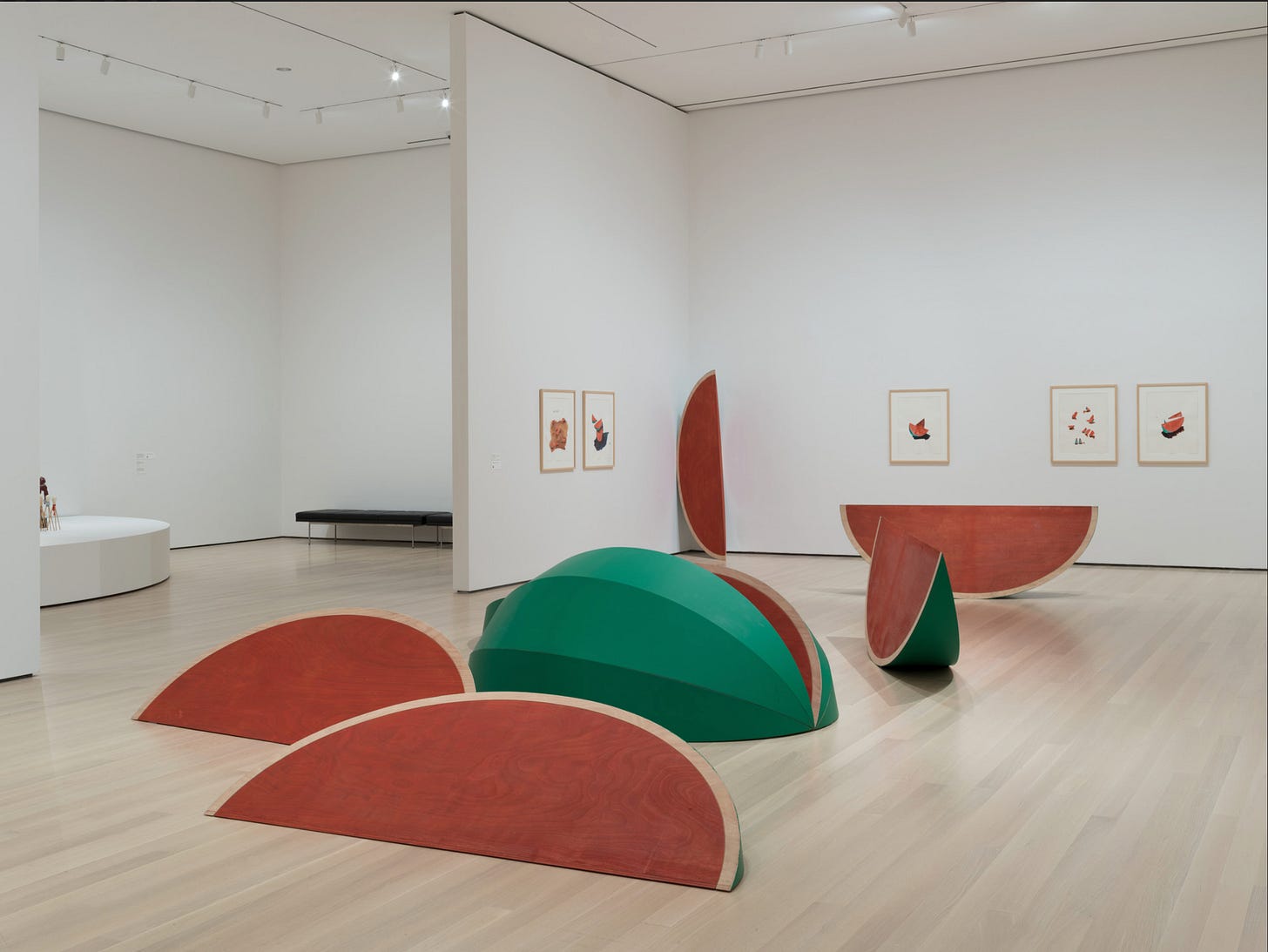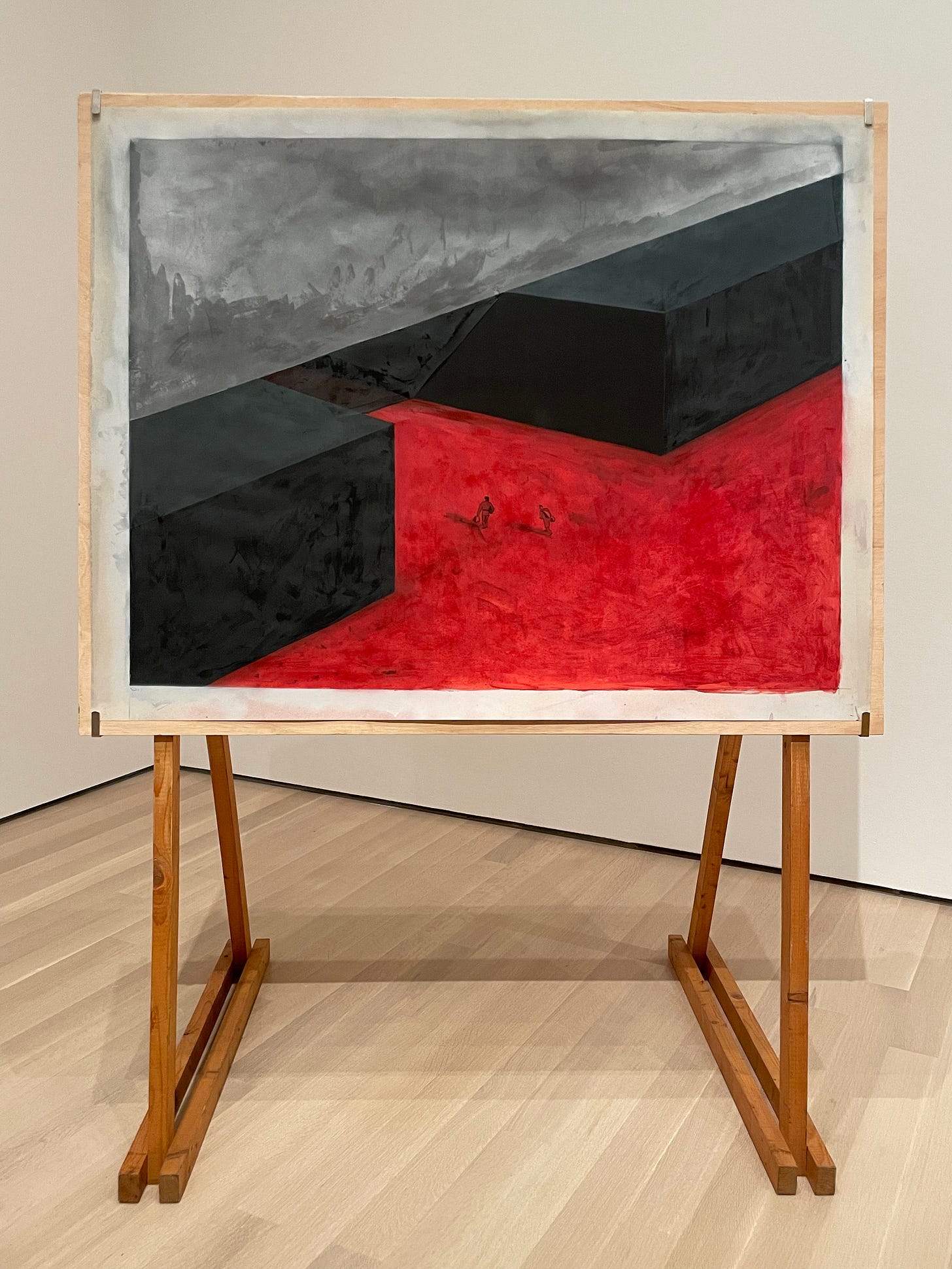I went to the Schütte show this afternoon. At first I was going to write about a red brick wall, a red glaze, a red path to a red black building, a monolith that is a museum. But I’m in a museum, a monolithic one, so I decide against it.
Too close, too red.
Past the red glaze and the red path on a delicate piece of paper meant to show scale—how small are we, toiling away in this image, people dragging bags (of what? ideas, love?) to a place that will receive it. Like something out of the Dune movies, only more sumptuous. No sand.
To the watermelons. The present overwhelms the past. And of course I am thinking about Palestine and not form or figuration. Not a modernist German who wanted people to see images again—because he was tired of abstraction, so he wanted to tell stories, to get people to see narrative rather than an overwhelming string of signs without whispers. But now the images are too much, too blunt, too devastating, devastating is not big enough, not red enough. The blood is black. The blood is not black.
We have too much narrative and not enough care.
Again, the watermelons in sliced megastructure—make the watermelons big, make us smile at them, make us think about the last time we ate watermelons, let us think about how the melons grow in sand, in sandy places. Are there any watermelons left in Palestine? I wonder, out loud, unnoticed, in the gallery.
And then the sand is glass and the glass is cutting the feet of children who have no more feet.
And the watermelons and the slice of wood that reveals the swirling grain inside, and I think this is like a membrane cut sideways, a dissection like in middle school, but this time turned, twisted, to let us see how the grain is graining, that this is not a watermelon but a piece of wood painted red. And is it a story or a sign, and I do not know anymore.

And there are no seeds. Why are there no seeds? What is this lack of futurity meant to say? To evoke? And I think, perhaps, these are not absences so much as dreaming dreaming dreamings of a world with less bombs and more seeds.
At least, today, for a minute, I can think that.
Perhaps, you will say, I have missed the point. I haven’t written about the bronze or stone or clay. Just watermelons painted plywood. Paint that swirls on grain, graining. And I say: what else could be said about sculpture in the way a watermelon is also a sculpture, in the way it grows and churns and is both a symbol of resistance, and a symbol of symbolism that emerges on the horizon, which is to say, a symbol both before and after Schütte made these melons. And yet, how do we not engage with a critique of abstraction when this kaleidoscopic narrativization of a symbol that is, once more, anterior and posterior, begs us to critique the abstraction. How do we refrain from saying: this is too red.




